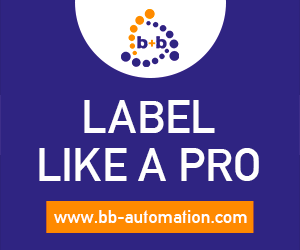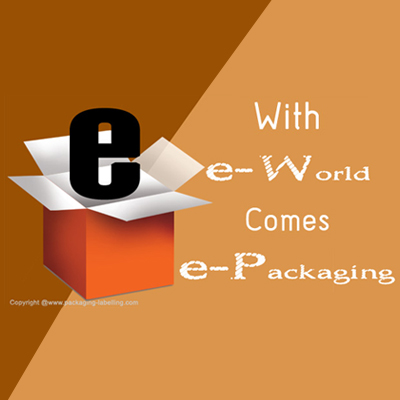Articles
Pharma Packaging | Recent Advancements, Global Market Forecast

Pharma Packaging - An Overview
Pharma Packaging is used to pack a product i.e. tablets or drugs providing environment unwanted exposure, identification, information against the physical damage etc. The major role of pharmaceutical packaging is to transform the formulation into an attractive and marketable product.
Continuous innovations in the pharmaceuticals such as Blow Fill Seal (BFS) vials, anti-counterfeit measures, plasma impulse chemical vapor deposition (PICVD) coating technology, snap off ampoules, unit dose vials, two-in-one prefilled vial design, prefilled syringes and child-resistant packs have a direct impact on the packaging.
Ideal Qualities of a Pharma Packaging:
- Pharma packaging should have mechanical strength to withstand handling, filling, closing and transportation.
- The container should not support mould growth
- It should not react with the contents stored in it
- The contents of container should not be absorbed by the container
- The container must bear the heat when it is to be sterilized
- It should not leak alkali in the contents
- The material used for making the container should be neutral or inert
- Any part of the container or closure should not react with each other
Types of Pharmaceutical Packaging
1) Primary Packaging
Primary packaging includes the package that is in direct contact with the pharmaceutical formulation. The main aim of this type of packaging is to protect the formulation from environmental, chemical, mechanical and/or other hazards.
2) Secondary Packaging
The package external to primary package is known as secondary packaging. This package provide additional protection during warehousing and also provide information about drug product. Eg: Leaflets.
Functions
- Protect the flexible containers
- Protection from tough handling during transportation
3) Tertiary Packaging
Examples: Barrel, crate, container, pallets, slip sheet.
It is outer package of secondary packaging & prevents damage to the products. It is used for bulk handling & shipping.
Components of packaging
a) Container: Containers are used to place or enclose pharma products. They are direct contact with drug.
b) Closure: Closure tightly packs the container to exclude oxygen, carbon dioxide, moisture & prevents the loss of water and volatile substances from the products.
c) Carton/outer: Carton packs are made up of cardboard, wood pulp etc. They provide secondary protection against mechanical and other environmental hazards.
d) Box: Box is used to pack multiple products. It provides primary defense against external hazards. The boxes are made up of thick cardboard and wood.
Types of Primary and Secondary Packaging Material:
| Material | Type | Example of Use |
| Glass | Primary | Ampoules or vial |
| Plastic | Primary | Ampoules, vial and dropper bottle |
| Cardboard | Secondary | Carton box |
| Paper | Secondary | Labels, patients information leaflet |
Global Market Forecast - Pharma Packaging
Global Pharma packaging market is estimated for US$70.16 billion in 2017 and it is expected to reach US$149.25 billion by 2026 growing at a CAGR of 8.75% during the forecast period.
The major factors favoring the growth of the pharma packaging market are growing pharmaceutical industry in emerging economies, growing demand for drug delivery devices and blister packaging.
Additionally, rapid increase in the growth of the primary pharmaceutical packaging, growth in global demand for primary pharmaceutical packaging are considered as opportunities for the market growth.
Pharma packaging cost is expected to reduce with the advancements in technology and eco-friendly packaging. The introduction of nano-enabled packaging is projected to have a positive impact on this market.
Recent Advancements in Pharma Packaging
Recent advancements in Pharma Packaging are:
a) Cypak's Advanced Medication Monitoring and Report-Card Systems
Cypak's advanced medication monitoring and report-card system is an advanced technology that enables patients to communicate with healthcare professionals through printed technology.
It will record the actions performed by the user i.e. when he/she open or removed the pill from its blister pack. This allows the patients to record their feedback on side-effects and treatment efficacy and upload it.
This technology embraces new levels of patient-doctor interface to work out the best treatment plan. Sensor-based packaging concepts are best applied in clinical trials. This helps in drug development to establish whether a drug is ineffective or simply not being taken properly.
b) Burgopak's Sliding Blister Pack:
Burgopak healthcare and technology introduced this child resistant packaging design. It can only be opened by applying force at two different points on the packaging.
The blister pack and leaflets are coordinated with the outer box, which insures the product is never separated from its packaging.
c) Pharma Small Hands Resistant (SHR): A Re-closable and Tear resistant Carton
A reclosable and tear-resistant carton is ideal for highly toxic drugs. SHR is a child resistant reclosable carton. It is ideal for highly toxic drugs and it is easy to use for senior adults. It is an innovative paperboard package system it only requires simple squeeze and pull maneuver.
d) Ecoslide-RX Sustainable Compliance Packaging
This packaging is made from 100% recycled material using unbleached paperboard and clay coated surface designed to house blister packaging with a low of unsustainable film and foil.
The slide packaging does not require heat sealing in the manufacturing process that reduces both cost and energy usage.









